Useful gift to your subscription
Get meat dog cookies from the famous bakery Dogtown with your first order for FREE! Become part of our Furnatura pack and receive practical advice, tips and great deals from the world of dogs
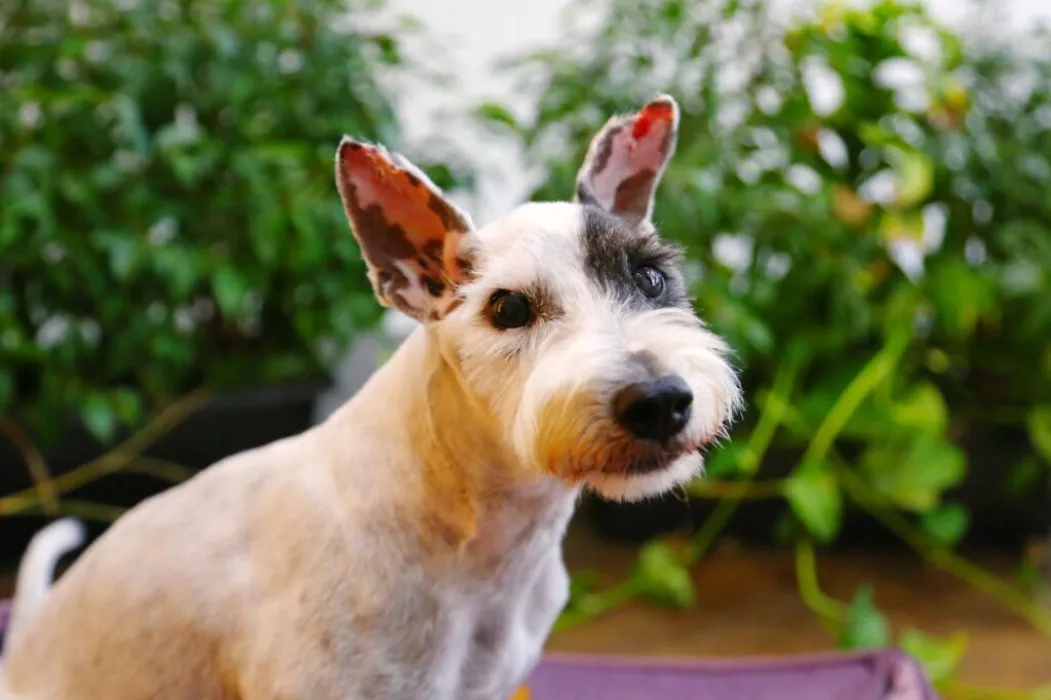
BLOG
Maybe you've experienced it: your dog is always nervously scratching, even though you're careful about his hygiene. In many cases, the itching and inflammation is caused by overgrown yeast, which is rampant in the dog's ears, fur or paws. They make life difficult for dogs of all breeds and often require treatment by a vet, which often means antibiotics or corticosteroids. And that's not pleasant for people, let alone dogs.
But there are natural ways to get rid of yeast, or even prevent yeast infections.
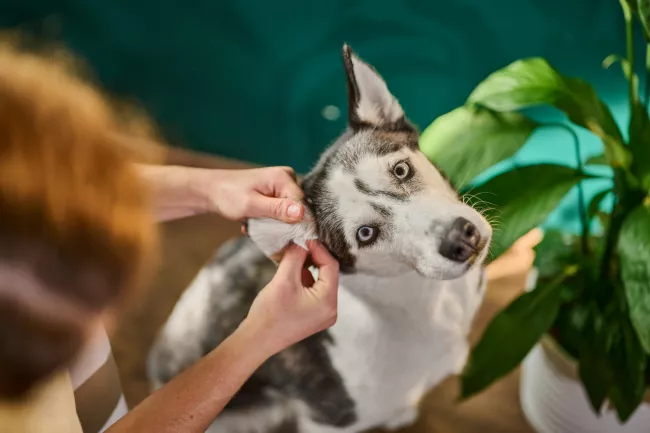
Apple cider vinegar can be used to combat yeast that has already manifested on the skin and coat, and this is because yeast cannot tolerate acidic pH. Mix apple cider vinegar and water in a 1:1 ratio and rub it on your dog's body. The yeast won't like this and will stop multiplying.
Skin affected by yeast also needs to be soothed and regenerated, which is what green clay is great for - an antioxidant with the ability to draw toxins, mould and yeast out of the body. Green clay will soothe the skin and your dog won't tend to lick himself all the time.
We recommend trying an antibacterial shampoo, mud mask or soap for problematic skin. What makes them different?
Thanks to the addition of green clay, it cleanses the skin deeply but does not dry it out. Overall, the shampoo helps absorb grease and odour caused by microorganisms. It is an ideal helper against skin yeast infections and hotspots. Due to the peppermint content, this shampoo helps to treat inflammation in skin folds. It soothes irritated flaky skin and reduces itching. Rosemary and thyme reduce swelling and relieve rashes. This shampoo is ideal for allergic skin manifestations in dogs and prevents bacteria and mycotic organisms from returning.
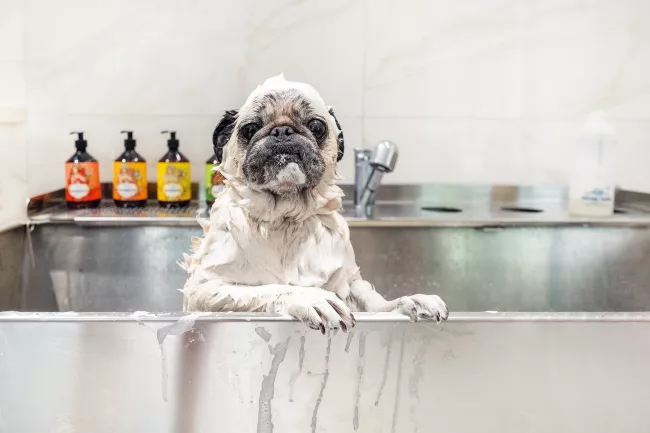
It is a great helper in the fight against yeast and skin diseases. It contains Dead Sea salt, which is rich in more than 35 different minerals. Among others, magnesium and potassium, which treat skin diseases. The green clay it contains is a great antioxidant, which also gets rid of dead skin cells in the dog, helping to shed old fur during the overgrowth period. Green clay and rosemary have antibacterial and antifungal properties. Argan and jojoba oil nourish the coat, which is then shiny for a long time. The mask is suitable for allergic dogs as well as puppies and sensitive dogs. It does not contain any tensides, so it can be used daily. Or just topically on the affected areas. Just leave to dry, the mask will then unroll itself. It can be used as a treatment on shampooed coats or, for very sensitive dogs, instead of shampoo.
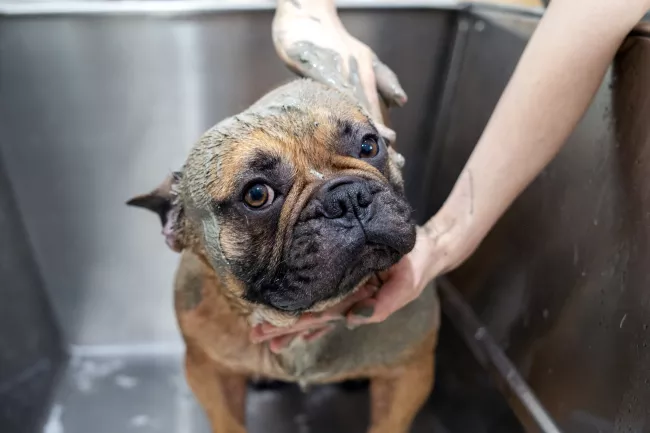
Tea tree oil disinfects enlarged pores and together with bentonite absorbs excess grease from the dog's skin and coat. Neem oil has antifungal, antiviral and antibacterial properties, helping to remove harmful organisms, especially yeast, from the skin. A decoction of thyme and rosemary helps to counter itching and heal inflamed areas. It is also a great help against dandruff. We recommend using the soap on, for example, highly itchy skin or on the skin of dogs that have a thick coat with undercoat that easily becomes inflamed. The soap comes in a handy box and can be packed on the go so that it is always at hand.
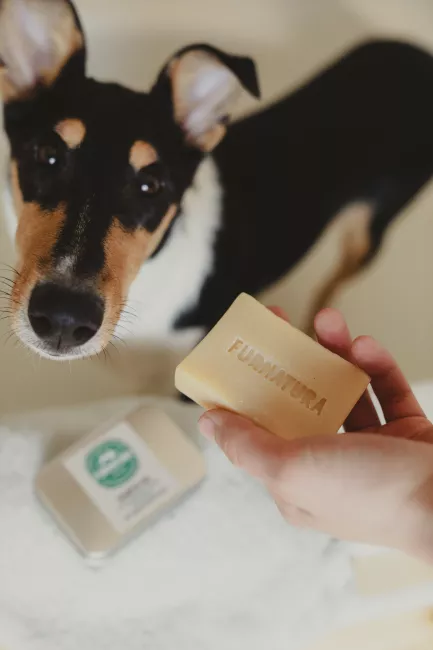
Yeasts are fungi that live in small numbers in your dog's intestines. They are a normal part of the digestive tract where they help digest food. However, when they overgrow, they irritate the cells lining the intestines and cause inflammation. Your dog then feels itchy and has no choice but to keep scratching and licking himself as he tries to get rid of the yeast. Fortunately, you can help him.
There can be multiple reasons and they can strike any dog at any time, which is why prevention is important, and in all breeds. Yeast in a dog is indicative of:
Weakened organism - through illness, improper nutrition or antibiotic treatment.
Moist skin, excessive sebum production or movement in humid environments - that's why yeast in dogs appears in spring with the first rains and frolicking in the water, when dogs get wet, steamy and yeast has a premium.
Since yeast is caused by an imbalance in the digestive tract, it is necessary to start with a well-chosen diet to treat it. Proper nutrition can help restore this state and reduce the risk of yeast recurrence. Certain foods can help strengthen a dog's immune system, allowing it to better fight infections such as yeast. Additionally, certain foods have anti-inflammatory effects and can help reduce the inflammation associated with a yeast infection.
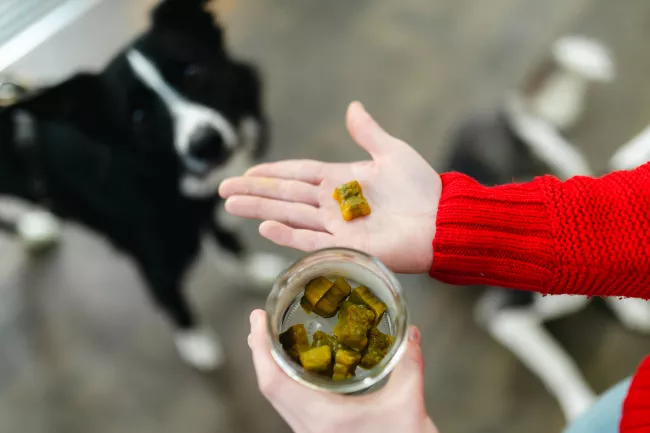
It is important to follow the correct diet of the dog - no cereals (look at the composition of popular kibble) or sugars (biscuits). We recommend a raw barf diet and well-chosen supplements to support immunity. Try Furnatura gummy bears to support immunity, digestion and help from parasites. We've hidden behind a strong beef broth:
They are such a capable and extra tasty helper in the fight for a healthy gut. Just give once a day as a treat or add to a meal. And you can give them as a preventative all year round.
TIP: To give your dog's digestion an even bigger boost in the right direction, add prebiotics and probiotics, coconut oil, sauerkraut or neem oil to his diet. These work together to kill yeast and prevent further growth, so natural gut health is restored.
If your dog's ears itch and you can smell a sweetish, earthy odour, he is suffering from yeast. The ears need to be cleaned of excess sebum first. A mixture of oils for healthy skin heated to body temperature (just warm the bottle with your hands for a while), which you rinse your dog's ear with, will help with this. The oil will wash away excess sebum from the ear. This is then washed off with either a soap for a problematic skin or an antibacterial shampoo. If the ears tend to steam and the sebum comes back quickly, you can use ear powder. Once healed, we recommend using Furnatura ear cleaner for your next regular treatment, as it will create a hostile environment for yeast. It works great as a yeast prevention and as an adjunct in the treatment of ear infections.
"Yeast first appeared in Rufus in the spring with spring allergies. Unfortunately, the vet and I first treated them with corticosteroids and the situation only got worse as a result. Then we were recommended Furnatura natural cosmetics and supplements. The mud mask from Furnatura is great! We now clean his ears preventively with Ear Cleaner and the yeast has not returned! We are so glad that we got this tip and didn't have to fight the yeast for long.."
- Jana F. with her labrador Archie
Do you want your dog to be free from yeast? Get a complete package of natural products for a healthy, scratch-free coat.
The package for east infections offers you help in the fight against this annoying disease and your dog instant relief.
You can recognize yeast by its specific earthy, sweetish odor and it most commonly affects the ears and paws of dogs. However, they can occur anywhere on the body. How to treat it? You can wash the affected area with neem oil soap or apply a mud mask that contains antibacterial clays and Dead Sea minerals. Then massage in a supportive oil with neem and dragon's blood extracts. It's a novelty specifically formulated for skin infected with yeast infections. If the area is steamy, red and moist, you can dust with ear powder (can be used on any area of the body).
The pack is particularly suitable for short-haired breeds such as bulldogs, shar-pei, bull-type breeds that often suffer from ringworm and hotspots. In the summer, the pack will also please owners of dogs that often bathe in the sultry months and their coats get easily matted.
With regular use of Furnatura natural Czech cosmetics, you can guarantee that your dog will have healthy skin and a quality coat.
If you do not know how to maintain your dog's coat or would like to treat him to more cosmetic treatments, do not hesitate to contact the helpful staff at our Dogtown salon.
